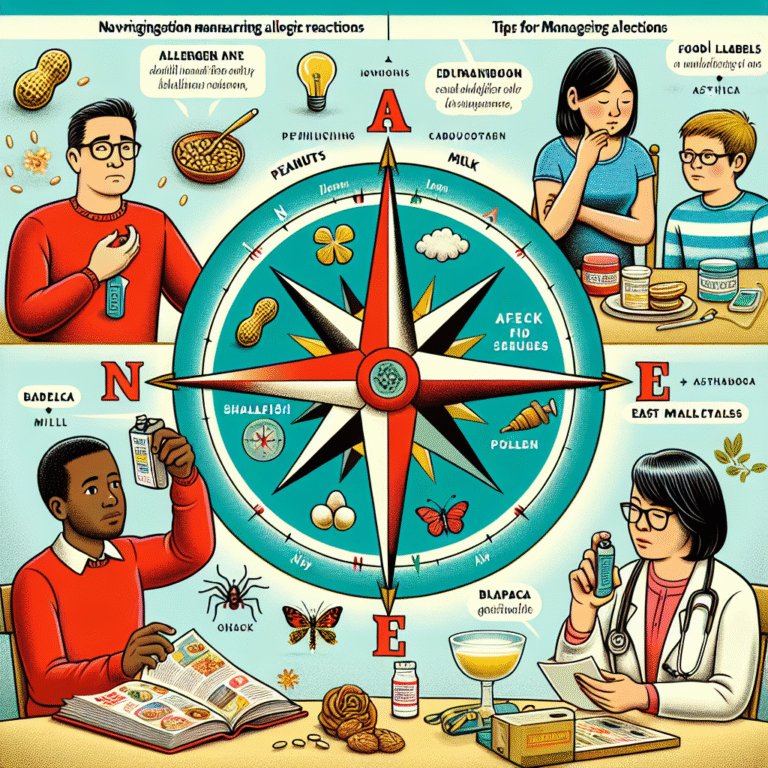
Introduction
In the realm of scientific research and experimental design, one concept stands above others as a cornerstone of credibility: the control group. Imagine embarking on a journey of exploration, only to find that without a map, your progress becomes erratic and unclear. Control groups serve as that essential map, guiding researchers through the complexities of data interpretation and allowing for more reliable results.
In this article, "Control Groups Explained: Enhancing the Integrity of Experimental Design," we’ll unravel the intricacies of control groups, spotlight their critical role in ensuring accurate experimental outcomes, and provide actionable insights for researchers and enthusiasts alike. Buckle up, as we embark on this enlightening journey through experimental frameworks!
Understanding Control Groups
What is a Control Group?
At its core, a control group is a baseline against which experimental observations can be measured. It comprises subjects or samples that do not receive the treatment or intervention being tested. By comparing the outcomes of the control group with those of the experimental group, researchers can determine the effects of the treatment while controlling for confounding variables.
Why Are Control Groups Essential?
Control groups enhance the integrity of experimental design by providing a clear point of reference. The absence of a control group can lead to flawed conclusions drawn from the experimental data. For example, if a new drug is tested without a control group, any observed effects may mistakenly be attributed to the drug rather than other external factors like a placebo effect or natural progression of the disease.
Types of Control Groups
-
Placebo-Controlled Groups: Often used in clinical trials, these groups receive a placebo—a treatment with no therapeutic effect. This helps isolate the drug’s efficacy from psychological factors.
-
Active Control Groups: These groups receive a standard treatment instead of a placebo. This is particularly useful in determining if the new treatment is better than the existing standard.
-
Historical Control Groups: This involves comparing current findings with existing outcome data from past studies. Though useful, it’s essential to ensure historical groups are similar in significant aspects to the experimental group.
- No-Treatment Control Groups: This group receives no intervention at all, enabling researchers to observe outcomes without any influence from experimental treatments.
Case Study: The Impact of Control Groups in Clinical Trials
In 2006, the Vioxx controversy raised serious questions about the pharmaceutical industry’s testing protocols. Vioxx, initially marketed for arthritis pain relief, was pulled from the market after concerns about increased cardiac risks. Examining the clinical trials, researchers found that many did not include proper control groups to effectively gauge the drug’s long-term safety. This absence of control not only jeopardized patient health but also eroded trust in clinical research.
Analysis
This case starkly illustrates how the lack of a well-defined control group can compromise not only the integrity of a specific study but also public trust in scientific findings.
Designing Effective Control Groups
Selecting Participants
Should control group participants mirror the experimental group in demographics, health status, and other relevant factors? Absolutely! To ensure the validity of your experiment, it’s crucial that both groups are as similar as possible, except for the treatment being administered. This reduces variability and enhances the accuracy of the results.
Randomization
Random assignment of subjects to control and experimental groups minimizes bias, ensuring that external factors influencing outcomes are evenly distributed. Randomization can increase the likelihood of generalizing results to the larger population.
Blinding
In order to reduce bias further, blinding—where participants or researchers are kept unaware of group assignments—can be employed. This is particularly vital in psychological or clinical trials. For example, double-blind studies, where both the participant and the experimenter do not know which individuals are in which group, help mitigate expectancy effects.
Case Study: The Importance of Randomization in Research
A fascinating study by the CDC in 2017 aimed to test the effectiveness of a new vaccine against a viral outbreak. The researchers randomly assigned participants to receive either the vaccine or a placebo, ensuring a robust control group. The results indicated a statistically significant decrease in illness among the vaccinated group compared to the control group, leading to the vaccine’s eventual approval and rollout.
Analysis
This study exemplifies how carefully designed control groups and randomization can lead to significant breakthroughs in public health, solidifying trust and reliability in scientific claims.
Data Analysis and Interpretation
Interpreting the Results
Once data is collected, the analysis phase is critical. Statistical methods are employed to compare outcomes between the control and experimental groups. Common metrics include p-values and confidence intervals, which indicate the likelihood that observed effects are due to chance versus the treatment effect.
Visualizing Results
Tables and charts can simplify data interpretation, making it easier to convey findings in a way that is accessible and understandable. Below is a simple hypothetical comparison table showing the outcomes of two groups in a fictional study evaluating a new dietary supplement.
| Group | Number of Participants | Average Weight Loss (lbs) | Standard Deviation |
|---|---|---|---|
| Experimental Group | 100 | 8.5 | 2.0 |
| Control Group | 100 | 3.2 | 1.8 |
Statistical Significance
While presenting your results, always discuss the statistical significance of your findings. This provides additional assurance that the observed effects are likely due to the treatment rather than random variability.
Limitations of Control Groups
Ethical Considerations
In some scenarios, employing a control group may raise ethical questions, especially in clinical settings where withholding treatment can harm participants. Understanding when to forgo control groups is critical to the ethical integrity of research.
Generalizability of Results
Results from specific control groups may not always apply to broader populations. For example, if participants are primarily young adults, findings may not be generalizable to older adults.
Case Study: Ethical Dilemmas in Research
A study conducted in 2019 sought to evaluate the effects of a new antidepressant in a vulnerable population. Researchers faced challenges in controlling a group that received no medication due to ethical concerns of preventing effective treatment. Ultimately, they utilized an active control group to navigate this dilemma while still maintaining the integrity of their experimental design.
Analysis
This case illustrates the delicate balance between conducting rigorous research and maintaining ethical standards, especially concerning vulnerable populations.
Conclusion
In summary, "Control Groups Explained: Enhancing the Integrity of Experimental Design" serves as a vital component of any successful research endeavor. By providing a reliable framework for comparison, control groups bolster the credibility and validity of findings across fields.
As we’ve explored, effective experimental design hinges on the careful selection and management of control groups, with randomization and blinding helping to fortify results. Always remember the lessons learned from real-world case studies, where the lack of a control group led to significant consequences.
As you embark on your own research, consider the impact of a well-thought-out control group. Your findings could not only contribute to scientific advancement; they could also inspire actionable change.
FAQs
1. What exactly is a control group?
A control group is a baseline group that does not receive the treatment or intervention being tested in an experiment, allowing for comparison with the experimental group.
2. Why are control groups important in experiments?
Control groups are crucial because they provide a reference point for researchers to ascertain the effects of the treatment, helping to isolate the variables at play.
3. What types of control groups are there?
The main types include placebo-controlled, active control, historical control, and no-treatment control groups, each serving different purposes in experimental design.
4. How can bias be minimized in experiments?
Bias can be minimized through randomization, blinding, and ensuring that control and experimental groups are as similar as possible.
5. Are there ethical considerations related to control groups?
Yes, especially in clinical trials where withholding treatment from control groups may pose ethical dilemmas, it’s crucial to find solutions that uphold the integrity of the research while protecting participants.
With these insights, you’re well on your way to understanding the critical role of control groups in enhancing the integrity of experimental design!

















